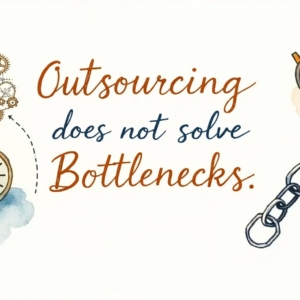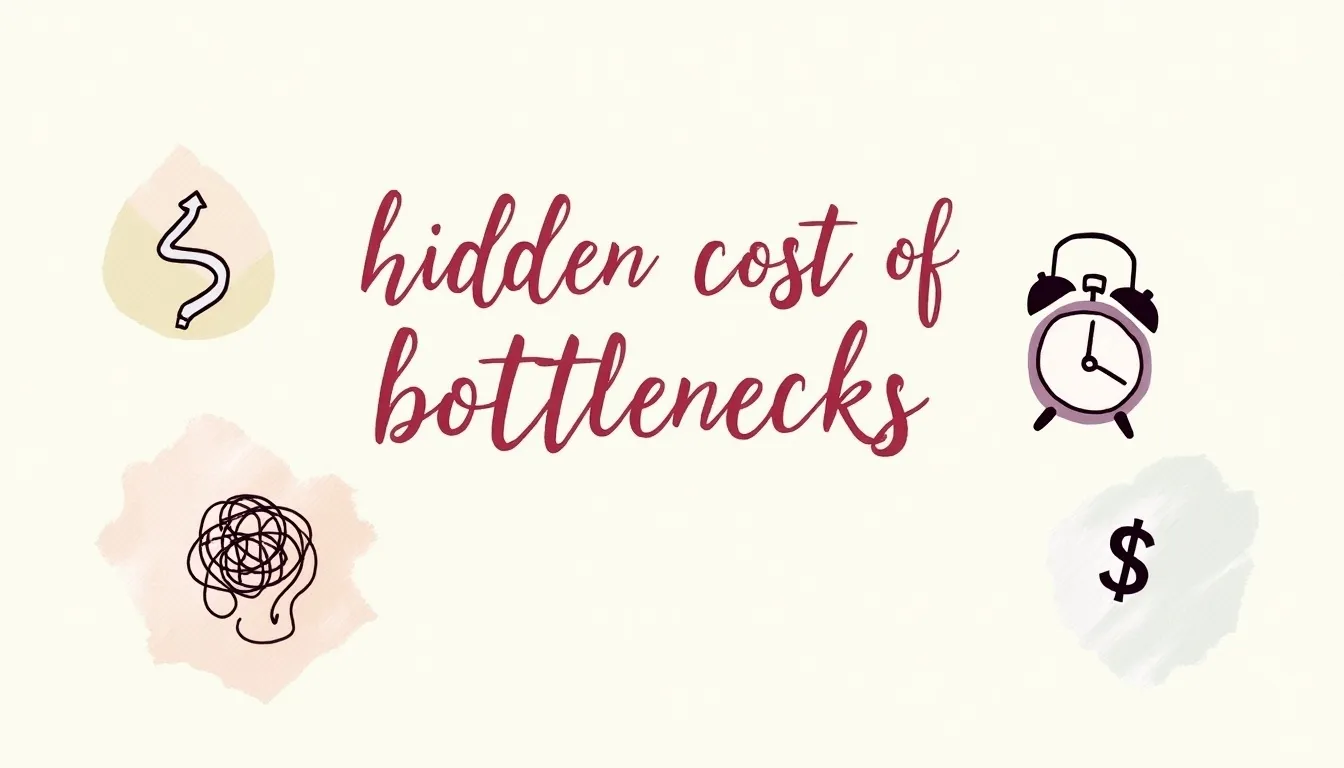Do you want to create the best website in the world? Whether it is to enhance your personal brand or to give your business greater visibility. When building a website, it is essential to know the best website & blog design tools in order to obtain a totally professional result.
But not only that, they will also help you to take less time in the creation process. They also will be more efficient in all your projects.
And the best of all is that it does not matter if you use WordPress, Joomla, Prestashop, or another website creation CMS, since many of the tools mentioned below can be used in any project.
Let’s go with them!
Website and blog design tools
Colorzilla
Maybe it happened to you some time. You enter a website with a color combination that you like so much. You wish to start using it yourself on your website. The problem is that sometimes it is not easy to figure out the exact color code. Or if?
To know the exact color code of any element of a website there is a tool that makes this task much easier. I’m talking about Colorzilla.
ColorZilla is a very easy-to-use extension for browsers like Google Chrome and Mozilla Firefox. All you have to do is select the eyedropper that appears next to the address bar. Next, you hover the mouse over the element for which you want to find out the color.
When you have it, you just have to copy the code and take it to the elements of your website.
Adobe Color CC
The choice of shades for your website should not be taken lightly. It is one of the fundamental pillars of your project since each color combination conveys a different first impression. Because of this, and because combining colors is not always easy, Adobe Color CC is one of the blog and web design tools that every web designer should know.
It is a platform where you can see thousands of combinations that have been made by professionals. You can also sort by their popularity. In this way, you will never make a mistake when choosing the palette for your website as you rely on the expert experience of web designers.
Google Fonts
Tired of the classic typefaces? If you want to stand out from the competition, differentiate yourself by choosing a good font. Forget the typical ones that everyone uses and be original when you go to choose them.
The best thing is that you put a typeface to the titles and the contents in a different one. Thus, they contrast and thus facilitate the reading of your texts. They do not have to be very different from each other. However, it is recommended that one be with a serif and the other without it.
And what is the best tool for it? Without a doubt, Google Fonts.
It is one of the largest free font bases in the world where you can find fonts of any style: Monospace, Handwriting, Display, Sans Serif, and Serif. No matter what style you want to give your website. With Google Fonts you will always find a font that adapts to it.
Sendinblue
Sendinblue lets you create beautiful landing pages, forms and design your professional email campaigns. No website is complete without an efficient email strategy, when designing your website keep in mind to use a tool like Sendinblue or its alternatives like constant contact, Mailchimp, etc. to collect payments, automate the workflow, interact with your client’s through integrated SMS and email campaigns to get the best conversion results.
Check out the detailed Sendinblue review here.
Friendly note: don’t forget about the content of your emails. A great design attracts attention, but a value-bringing text that is impeccable in terms of grammar does the conversion. Use TrustMyPaper if you are not quite confident in your writing skills.
WhatFont
Browsing the internet, or perhaps reading a blog, you may have found a font that you liked a lot and that you want to use in your designs. However, you don’t know its name and you want to find out what source it is.
You need not worry because, in this list of web and blog design tools, I bring you a solution to solve this little problem. It’s about WhatFont.
WhatFont is a Google Chrome extension that will allow you to select a text and know what font the author is using. As simple as activating the extension and clicking on a text.
 Page Ruler
Page Ruler
In case you didn’t know how to improve the speed of your website, you must upload the images to the exact size at which they will then be displayed.
If your images are going to be displayed in dimensions of 800x500px and you upload them to 1600x1000px, you are making the browser work more and at the same time increasing the weight of the images. This will make your website load slower, affecting the user experience and, therefore, worsening your SEO positioning.
To prevent this from happening, it is best to measure each image before uploading it. For example, if we have a blog and we want to know what is the space allocated to the header images of our posts. With Page Ruler, we can know exactly the dimensions and save a few kb along the way.
 Mockflow
Mockflow
MockFlow is one of the most widely used web design tools in the early phases of any project. Thanks to it, you will be able to create drafts of the structure that you want your pages to have, and being able to present several sketches to the client before starting with the design of the web.
In this way, you can make a small draft with a client who is not sure how he wants the design of his page. Then design on an already defined structure.
Furthermore, MockFlow does not only serve to create sketches for the client, it is also very useful when you want to restructure the contents and pages of your website.
Before you start to change things without a strategy, it is best to build a small draft to optimize the structure and boost the conversions of your website.
Pixabay
If there is one element that causes a web page to fail and have a mediocre appearance, it is the one related to the images.
It does not matter whether you have a good structure and well-chosen colors, if the images you have chosen do not match the rest of the web or their quality is bad, the impression that users will form will be that the website was designed by an amateur web-designer.
And where can you download quality images for your website for free? On Pixabay.
Pixabay is one of the platforms with the largest number of photos on the internet. It has a wide collection of free photos of all styles and sectors, so it will be easy for you to find the photo you are looking for.
Canva
If you have a blog, you should know that the header images for your posts are very important.
It is the first thing users will see when they enter your blog, so it is essential to make a good impression. Also, if someone shares any of your posts on social networks, the image that will appear will be the one that you have uploaded as a featured image. Therefore, if it is striking, you will get many more visits.
To make good images for your articles, you don’t have to study graphic design online, use tools like Adobe Illustrator or an Illustrator Alternative, or be an expert in graphic design. This is a very useful tool when creating content for your website or blog, which is free and online. It’s called Canva.
When you enter the tool, the first thing you will see is a huge list with default templates. Once chosen, you will arrive at a canvas with the chosen dimensions on which you can drag and drop various elements to go designing the piece: backgrounds, icons, illustrations, photographs, titles, stamps, etc. You will have endless possibilities to make the images on your website or blog unique and make a difference with your competition.
Tinypng
Continuing with the web page design tools focused on images here is an essential tool when it comes to optimization: Tinypng, which is a compressor that will reduce the weight of your graphic content.
It is easy to use since you only have to drag the images to the box that appears on the screen and Tinypng will optimize them automatically. which without a doubt, an advantage that your users and Google will appreciate.
Iconfinder
One of the best ways to present the services you offer on the homepage of your website is through an icon and a brief description. It is very professional, as it brings closeness and is much easier to read.
Icons are also very useful, as they add a touch of creativity to your blog content. You can put them next to the titles to break the monotony of the text or to be more original when writing posts with many points to be covered.
And what is the best source of free icons? Iconfinder.
It is a huge icon base in which you can find all the icons in the world in various formats and colors. And the best of all is that it has a search engine that will allow you to filter the icons by style or type. Flat, 3d, hand-drawn, cartoon type, etc.
 Stylebot
Stylebot
If you want to start customizing your website using CSS code but don’t want to modify it directly, Stylebot is one of the best web page and blog design tools to help you with your fears.
It is an extension for your browser with which you can visually modify any website of your choice, and then extract the CSS code of the said modification. In this way, then you will only have to copy said code that has been generated and paste it into the style sheet of your web page.
 Sublime Text
Sublime Text
If you are a developer and you want to create your web page with tagging and programming languages such as HTML, CSS, and JavaScript, your tool is called Sublime Text.
Sublime Text is an easy-to-use code editor designed for distraction-free programming. It has a very intuitive interface with many options and the ability to configure documents in a multitude of tag and programming languages.
One of the advantages is that Sublime Text will mark each label, attribute, value, etc., in a different color so that you can identify all the elements faster and your code is more organized.
In addition, it is possible to configure the tool in various dark colors to take care of the eyes and reduce eye strain during the long days of web development.
Without a doubt, it is a great web design tool in existence today.
 Notepad ++
Notepad ++
Like Sublime Text, Notepad ++ is one of the best web design tools for programmers who want to create pages without the need to use a CMS like WordPress or Joomla.
Some of the features that make it a good tool are its syntax and coloring system. Notepad ++ is able to identify the expressions of the language used and highlight them in a combination of colors that facilitate reading and scanning by the human eye.
GTMetrix
Although it is not a web page and blog design tool as such, it is very useful when optimizing a website after finishing its design.
GTMetrix allows you to analyze the loading time of your website so that you know exactly how long it takes to display. And best of all, it tells you what is causing your website to load slowly and gives you a series of recommendations to improve it.
As a general rule, your website should load in the shortest time possible, being 4 seconds the maximum desired time.
And why is it so important that your website should be fast? It is mainly for two reasons.
On the one hand, it is important that your website loads quickly because users have become somewhat impatient and, if they see that your website takes time to load, they go back and go to another page.
On the other hand, for some time now, Google takes into account the loading speed of your website when positioning you in its list of results. Therefore, the less it takes to load, the better SEO positioning you will have.
Blog and website design tools for WordPress
Visual Composer
If you use WordPress as your main web design tool, Visual Composer is your best ally.
Visual Composer is a visual layout plugin that allows you to choose from a multitude of creative elements that you can embed anywhere on your page to give it a totally professional design with just a few clicks.
It has a very intuitive interface and provides you with a huge list of options such as text blocks, images, icons with text, dynamic counters, tabs, interactive Google Maps, buttons, and others.
Due to its versatility, and because it is the most used and widespread visual layout of WordPress, it is without a doubt the best choice when creating web pages.
 Bloom
Bloom
Have you noticed those cool subscription forms that are all the rage lately? They serve to attract users who have liked the content of the web and then be able to notify them that there is new content and bring them back. Also to send them offers and discount coupons in case of being an eCommerce.
Before WordPress and plugins existed, making a subscription form to a mailing list or newsletter was a somewhat tedious task. You had to create the HTML code, then modify the appearance using CSS code, and then link to email marketing services via programming. Nowadays, with WordPress + Bloom, it is possible to create fully customized subscription forms with a couple of clicks.
Bloom allows you to design subscription forms combining images, text blocks, small animations, and everything you can think of. After designing it, you can easily link it with all email marketing platforms such as Mailchimp and place it anywhere on the web.
Personally, I think it’s one of the great blog and website design tools of the moment.
 Ninja forms
Ninja forms
It is essential that there is a good contact form that creates a communication channel with your users. Whether it is to contact a service, buy a product, or report a problem or suggestion on your page. If you use WordPress to design your pages, one of the best options is Ninja Forms.
It is a plugin that greatly facilitates the design and insertion of contact forms.
You will be able to insert forms with all the fields that you can think of. It ranges from the typical email, telephone, and name entries, to the more advanced ones. It includes lists of options with drop-downs, a checkbox with multiple selections, and even fields to attach documents.
Contact Form 7
The classic among classics. Contact Form 7 is the world’s most widely used contact form plugin for WordPress. So much so, that it comes by default in many templates.
Like Ninja Forms, you can create contact forms with all the fields you want and embed them in any page or post using a shortcode that is automatically generated when you create a form, and then these contacts can be targeted using an email autoresponder.
 Premium templates or themes
Premium templates or themes
Using WordPress has one of the great advantages over any other CMS of having a huge number of templates available. This will allow you to create a well-structured web page. The page with well-chosen colors and demo content that you can take advantage of. It makes the process of creating your website fast and the result is totally professional.
The WordPress templates are those that determine the structure and appearance that your website will have. Normally they bring several predetermined designs so you can choose. You can choose a design that best suits what you want to convey on your website. Thanks to templates, you can design a complete web page in a matter of hours.
WordPress Theme Detector
Surely it happened to you at some point. You enter a website made using WordPress that you like so much. You want to know what template and what plugins it is using to implement elements and functionalities on your website. However, if you do not know the owner of that page, you may be cut off asking. Or the designer simply does not want to tell you so that you do not copy him. But don’t worry, because I have the ultimate tool: WordPress Theme Detector.
You just have to insert the web you want to analyze and let the tool work for you. After a few seconds, the theme and plugins used by the web will appear. Which is Simply awesome.
Do you know any more web and blog design tools?
If you use any additional tool(s) rather than those listed here, leave us a comment with the ones you use the most on your projects. This way, we can increase the list to make it the best collection of web design tools and blogs in the world.
For more cool website and blog design tools, check out BizToolsPro.net
Author Bio – Aabhas Vijay is the founder of www.SMTPServers.co an email marketing blog, where he teaches trips and tricks around email tools.





















